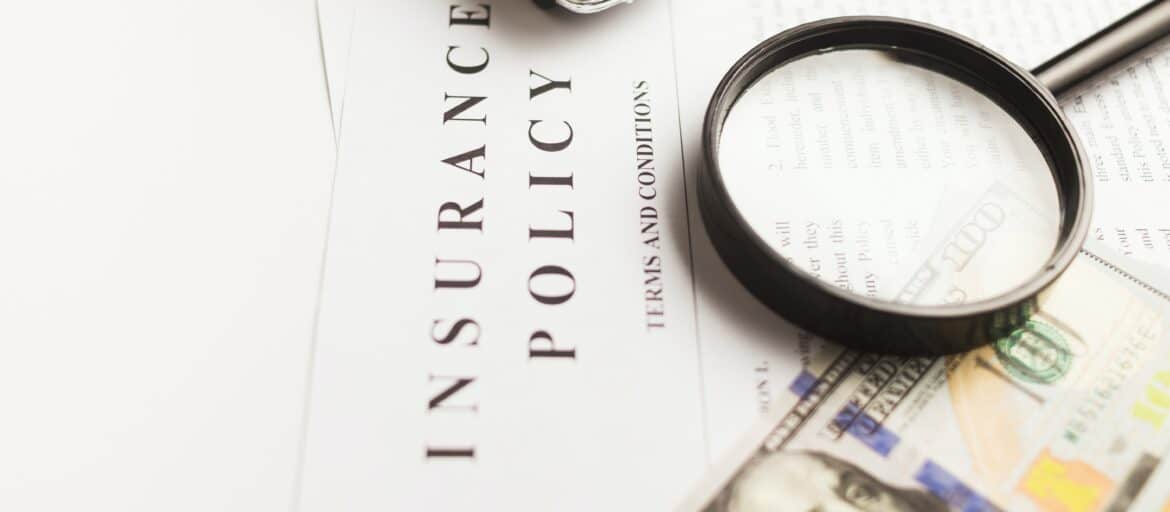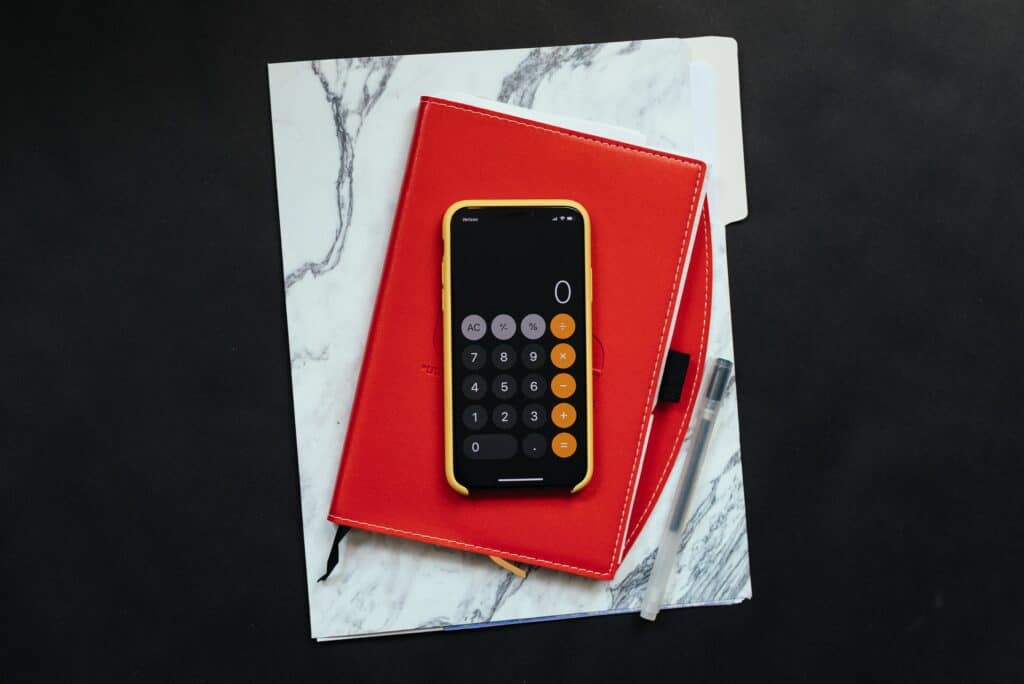
When it comes to reaching financial goals, one of the most talked about is having an emergency fund. But how much money do you really need to save in your emergency fund savings? Could you be behind in saving money? And, is there such a thing as too much in savings?
Let’s talk about how much money you should have in your emergency fund savings and how you can reach that goal.
How much should you be saving for an emergency?
First, the exact number will depend on you. This includes your current lifestyle, your “bare bones” budget (ie. the minimum you need to pay bills), if you have children, live in a high cost of living area, and more. Everyone’s budget is different, and because of that, what you’ll need to save will be different too.
Overall, experts recommend saving around 3-6 months of living expenses. In other words, if you spend $3,500 a month, you’d need to save a minimum of $10,500. But lately, especially with a looming recession, inflation, and bear market, some experts have recommended trying to save upwards of a year of expenses in your emergency fund.
How much money does the average person have in the bank?
The average American household has about $8,863 saved in an account. Based on age and other factors, this number does fluctuate.
For example, those with children save more on average, and those who are younger tend to have more put away than you may think.
But of course, the averages are still slightly lower than what most experts recommend for people to save. If you can, focus on saving 3-6 months of expenses as quickly as. you can.
Related Podcast: How to Get Organized With Your Money
Is a $1000 emergency fund enough?
While the $1,000 emergency fund was popular for quite a few years, we personally don’t believe it’s enough in most cases.
Think about it this way… a simple emergency, like needing to replace tires or paying bills that were higher than you first thought, can easily wipe out $1,000.
Instead, saving as much as possible, and having a larger emergency fund that can float you through multiple months, is advisable.
If you can’t save a full six months or year’s worth of expenses, focus on building up at least three months as fast as possible. That way, you can have more peace of mind and have some savings should multiple rainy days happen simultaneously.
Is 30k too much for an emergency fund?
That depends! If that $30,000 covers your 3-6 months of expenses, no, it’s not too much. Breaking that down, that’s spending about $5,000 a month over six months, which may be your average.
However, if you’ve saved $30,000, try to keep it in a high-yield savings account. That way, your emergency fund can earn some money while it sits there, even if you don’t use it!
Related Article: 11 Ways To Build Up Your Emergency Fund
How much is too much in savings?
There is no such thing as “too much” in savings. However, once you have a fully funded emergency fund, there may come a time when your money could earn more money in different accounts, like investment accounts.
So once you’ve saved however much you need for the three, six, or 12 months you’ve saved for, you’ve reached a good number and can start putting your money elsewhere so it can grow faster!
How long should it take to build an emergency fund?
This depends on your income and how much you can realistically save each month. But in general, it takes most people between six and 18 months to build an emergency fund.
Of course, you may be able to complete your fund in less time, or it may take you longer if you’re lower income with higher expenses. But the key is to start saving when and where you can and not touch that money over time.
Related Video: Do These 7 Things To Improve Your Finances
Is an emergency fund the same as savings?
Yes, but with a different purpose. General savings is usually for goals or future expenses, things that need to be saved over time. But an emergency fund is more for the “oops” times or rainy days — like if your car suddenly breaks down.
So while an emergency fund is a savings fund, it’s utilized slightly differently. And, it’s okay to have an emergency fund and other savings accounts, there’s no right or wrong way to save your money.
Which type of account is best for emergency savings?
Emergency savings should always be in an account that is easily accessible. So we recommend a high-yield savings account that you can access in a day or less.
Without question, we highly recommend that your emergency fund savings is in a completely separate account from any of your other money. You do not want this funds commingled and you also don’t want to make it easy for you to dip into your emergency savings for non-emergency related expenses.
Related Article: Top 5 Tools to Organize Your Money This Year
Do I really need an emergency savings fund?
Yes. An emergency fund helps create a financial buffer to keep you afloat if you have a time of need. An emergency fund can also keep you from relying on credit cards or high-interest loans. And, the more you need money-wise, the smarter an emergency fund is.
How much should a 30-year-old have in savings?
The general rule for 30-year-olds is to have one times your annual income saved by age 30. So if you’re yearly income is $45,000, most experts recommend having at least $45,000 saved by 30.
By the time you reach 40, they recommend three times the amount of your annual income. This doesn’t just have to be in an emergency fund. In fact, it can compromise of an emergency fund, 401k savings, and other investments.
Of course, this doesn’t reflect the average of what most Americans actually have saved. But, it’s a great starting point to focus on when saving your emergency fund.
Related Video: 5 Money Mistakes to Avoid in Your 20’s
Should I build an emergency fund before investing?
Absolutely, especially if you’re in debt, are lower income, or have children. Having an emergency fund on hand can keep you from dipping into investments (and paying interest fees!) and also from getting into further debt.
However, if you can manage both building an emergency fund and keeping up with your investing, it may be worth doing both at the same time. But if you don’t have a lot of money to put away each month, it’s better to focus on one goal at a time.
Related Article: 10 Ways to Simplify Your Budget
How to build an emergency fund if you haven’t yet
Now that you know how much money you should have in your emergency fund savings, now is the time to start building yours if you haven’t yet. Here’s how to get started and reach a fully funded savings account faster.
Set your budget
First, if you don’t already have a budget in place, now is the time to set it up. You can’t save as much as possible if you don’t know where your money is going month to month.
By setting up a budget, you can maximize your income, reduce unnecessary spending, and focus more on saving money in your emergency fund.
You can set up your budget in many different ways, but the most common are via pen and paper, an excel spreadsheet, or a budgeting app like Mint or EveryDollar.
Related: 8 Apps That Will Help You Manage Your Money Better
Determine your savings goal
Once you have your budget set up and know how much you could realistically save each month, the next step is to determine your savings goal.
How much do you need to save to have a fully-funded emergency fund? And, how much would it take you based on your current budget? This goal can keep you motivated, even during difficult times, to save your money.
Now, it’s also important to note that things may come up when trying to reach your savings goal. Don’t get discouraged, especially if you have to dip into your emergency fund while building it up. Take stock of what you have, and be flexible with your goal when needed. But still, keep the goal in mind, so you remember its importance.
Set up direct deposit or set calendar reminders
Next up, you want to save your money in the easiest way possible. There are two ways to do this.
The first option is great for those without a lot of time to budget or who tend to be spenders. The easiest way to save money when you’re used to blowing it is by keeping it “out of sight, out of mind.” To do that, you’ll want to set up direct deposit.
You can usually do this with your employer by requesting that a percentage or amount of money be put into your savings account each paycheck. If you’re self-employed or your employer doesn’t have this option, you can use an account like Qapital offers, where they split your money for you.
Another option is to set calendar reminders. This is a great option if you want to be more involved with your money or for those who don’t like the idea of a specific amount of money coming out of each check.
You can set up a weekly or monthly reminder, take the money you want to save to reach your goal, and throw it into savings.
Increase your savings over time
Over time, you may earn more money or have side hustles or extra income that you can throw into your emergency fund. If you increase your income, you should also increase the amount you’re saving.
Experts recommend increasing your savings by at least 1% every six months or so to increase your savings fund.
Related Article: 7 Smart Ways to Spend Your Tax Refund
Save “extra” income
Tax refunds, birthday gifts, and job raises can give you extra income over time. Instead of increasing your spending or lifestyle, try to save that money as often as possible. This can help you reach your savings goal faster and then be able to work towards other goals like investing or long-term savings.
Also, if you have the time and energy, you can add a side hustle to your weekly to-do list and save that extra money. Of course, you’ll need to put some to the side for taxes (if applicable), but the rest can easily build your emergency fund without you spending your regular income.
Related Article: 7 Side Hustles That Cost You No Money To Start
Use a high-yield savings account
A high-yield savings account helps you earn money on the money you’re already saving. And while a few dollars here and there may not seem like much, it’s free money that you didn’t have to work harder for. The longer you let your emergency fund sit there, the more you can make over time.
Also, keep an eye out for cash incentives. Some banks offer these deals to new customers for opening new savings accounts. This extra cash can be a helpful bonus in getting your emergency fund started.
Building an emergency fund savings
Building an emergency fund doesn’t have to be daunting. In fact, it’s possible to build an emergency fund in less than a year. Just use these tips to make it easier to build yours now!







